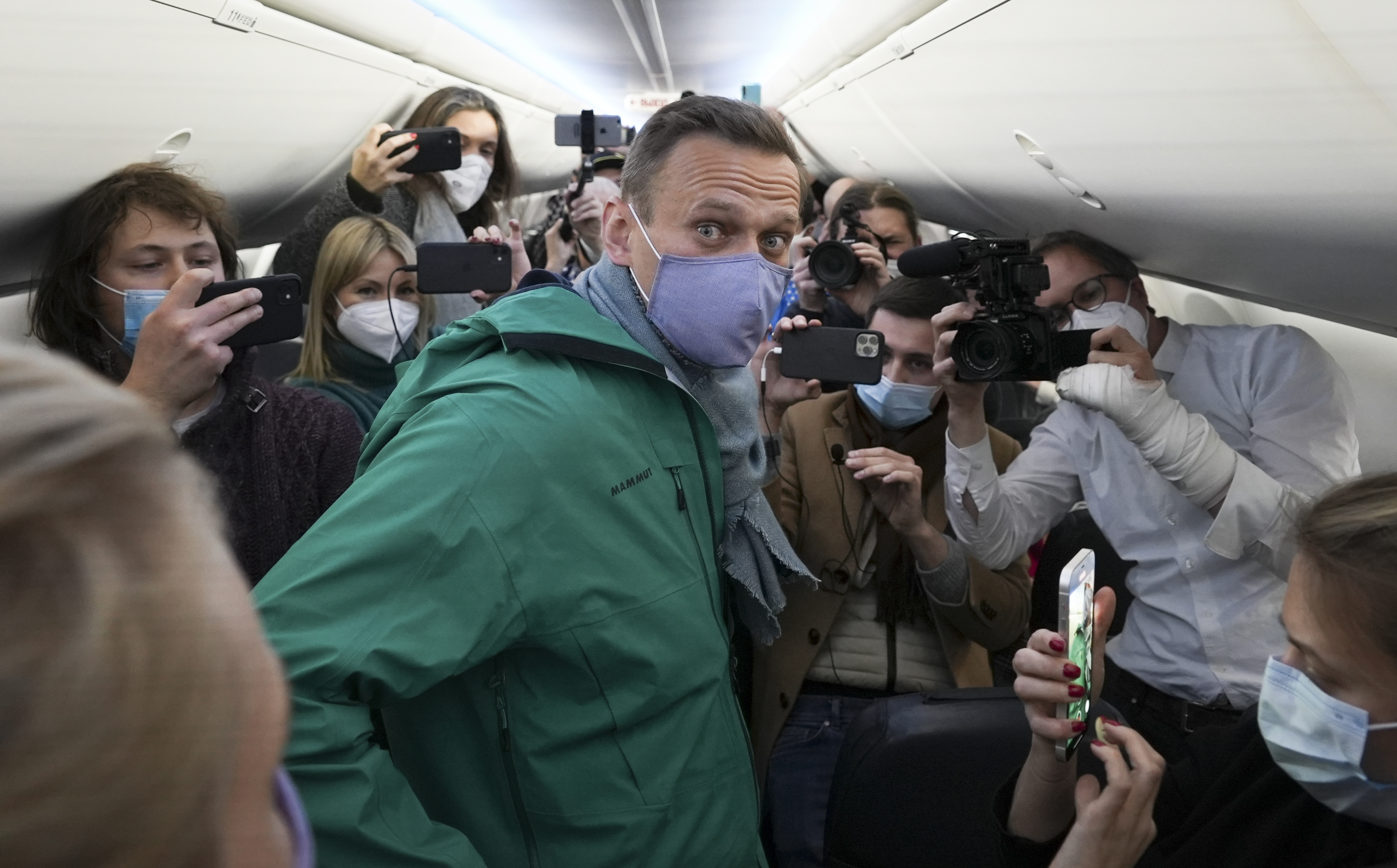Record audience tune in to USAGM networks’ extraordinary coverage of Navalny’s return to Russia

Millions turned to Radio Free Europe/Radio Liberty’s exclusive coverage of Russian opposition leader Aleksei Navalny’s January 17 return to Moscow – an event that Russia’s main TV channels were not reporting. The protests in Russia that followed Navalny’s arrest likewise generated USAGM audiences as networks provided unprecedented analysis.
RFE/RL’s Current Time’s special broadcasts attracted nearly 5 million views across platforms, including YouTube with many on social media praising and reposting the broadcast. The footage was shared by Aleksei Navalny’s official Navalny Live YouTube channel, including his detention and remarks to media inside Sheremetyevo airport as well as by high-profile Kremlin critic Bill Browder, Bellingcat investigator Christo Grozev, New York Times columnist Nicholas Kristoff (via Meduza), Der Spiegel Foreign Editor Mathieu von Rohr, and others.
Current Time stayed close to the action as its evening show anchor, Igor Sevriugin, traveled on the same plane as Navalny from Berlin to Moscow. Sevriugin streamed live from his phone the moment Navalny boarded the plane, greeted by media and other passengers, as well as his full journey in Moscow from the tarmac to detention at passport control. Navalny was returning to Russia after recovering from an August 2020 poisoning of a nerve-agent, an attack that the Kremlin has denied involvement.
RFE/RL’s Russian Service‘s reporter Andrey Sharogradsky also traveled on Navalny’s Berlin-Moscow flight, providing coverage. Overall reporting received record numbers, as the service’s YouTube stream attracted almost 1.3 million views, complemented by Live blogging and a social network review. As a result, the service’s YouTube channel overall registered over 2.5 million views on coverage of the news event.
Coverage from RFE/RL’s English-language newsroom included reporting ahead of Navalny’s return to Russia, a timeline of Navalny’s run-ins with Russian authorities, and an analysis noting, among other things that, for an opponent they belittled for years, Russian authorities seemed to be quite concerned about his return.
RFE/RL and Current Time also covered the Kremlin’s efforts to detain Navalny’s associates and attempts to prevent anti-Putin protests by pressuring social media companies to restrict content.
On Saturday, January 23, as protests started to spread from East to West across Russia’s 11 time zones, Current Time provided a live, seven-hour special, covering events in several cities across platforms (on YouTube alone, the stream was viewed over 2.8 million times). The networks also documented the unprecedented levels of police brutality against protesters and provided an overview of how state TV channels later tried to spin the story of the protests – during which nearly 3,900 people were arrested.
Later, RFE/RL featured an analysis of the significance of the protests, highlighted international condemnation and criticism of Kremlin’s suppression of Russians’ civil rights, while also reporting on Kremlin’s claims that the U.S. is interfering in Russian domestic affairs by allegedly encouraging the protesters.
VOA Russian also provided U.S. reaction to Navalny’s arrest, including from U.S. lawmakers who called for his immediate release. Coverage featured interviews with Republican Senator Roger Wicker of Mississippi and U.S. Representative Bill Keating, a Democrat from Massachusetts, and comments by U.S. and Russian experts. Senator Wicker told VOA the world must respond with “international condemnation” and continued sanctions against Putin and his government. A subtitled video garnered more than 46,000 views on the VOA Russian Facebook page.
About RFE/RL
Radio Free Europe / Radio Liberty is a private, independent international news organization whose programs — radio, Internet, television, and mobile — reach influential audiences in 23 countries, including Russia, Ukraine, Iran, Afghanistan, Pakistan, the republics of Central Asia and the Caucasus. It is funded by the U.S. Congress through USAGM.
